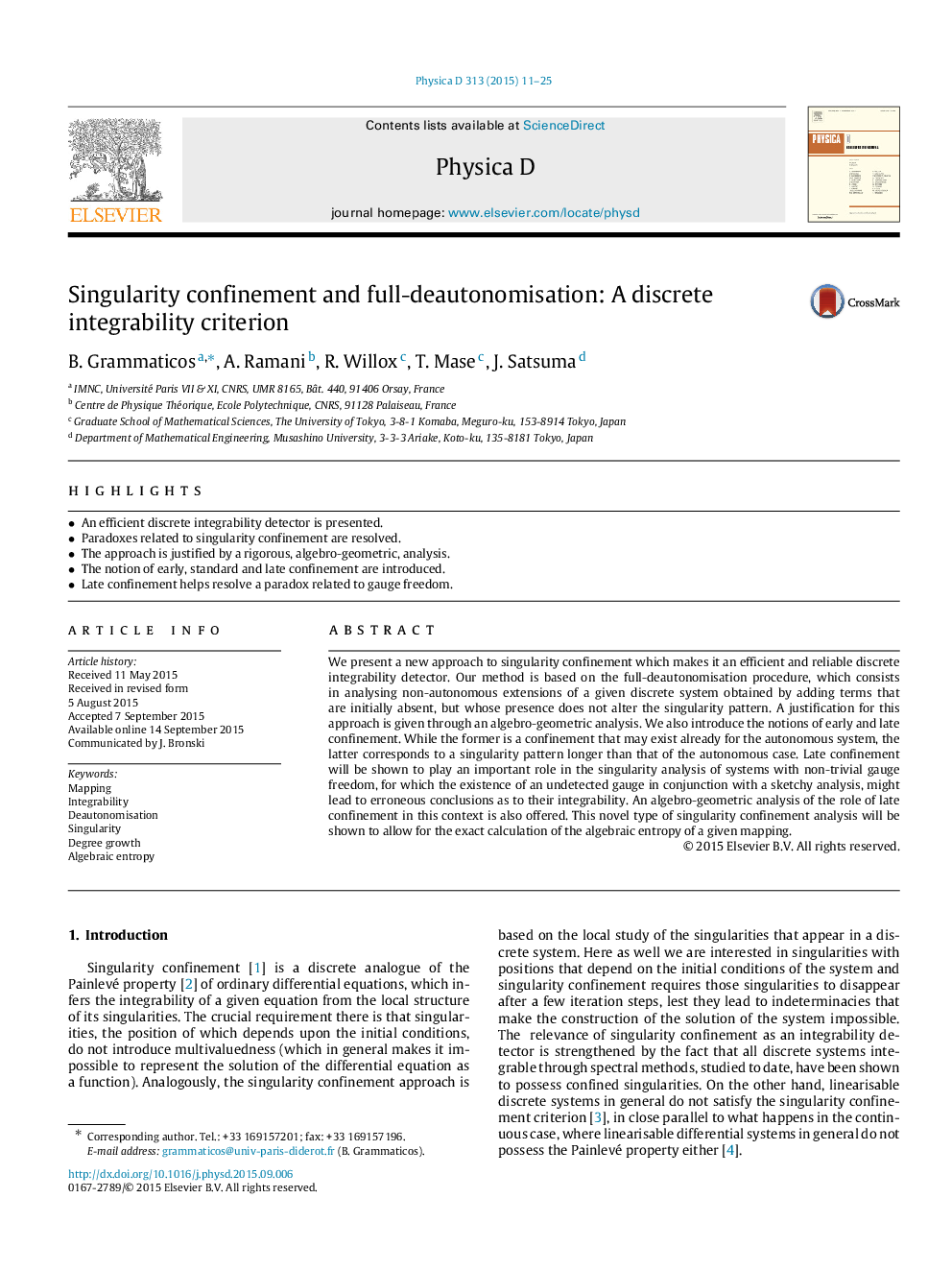| Article ID | Journal | Published Year | Pages | File Type |
|---|---|---|---|---|
| 1899258 | Physica D: Nonlinear Phenomena | 2015 | 15 Pages |
•An efficient discrete integrability detector is presented.•Paradoxes related to singularity confinement are resolved.•The approach is justified by a rigorous, algebro-geometric, analysis.•The notion of early, standard and late confinement are introduced.•Late confinement helps resolve a paradox related to gauge freedom.
We present a new approach to singularity confinement which makes it an efficient and reliable discrete integrability detector. Our method is based on the full-deautonomisation procedure, which consists in analysing non-autonomous extensions of a given discrete system obtained by adding terms that are initially absent, but whose presence does not alter the singularity pattern. A justification for this approach is given through an algebro-geometric analysis. We also introduce the notions of early and late confinement. While the former is a confinement that may exist already for the autonomous system, the latter corresponds to a singularity pattern longer than that of the autonomous case. Late confinement will be shown to play an important role in the singularity analysis of systems with non-trivial gauge freedom, for which the existence of an undetected gauge in conjunction with a sketchy analysis, might lead to erroneous conclusions as to their integrability. An algebro-geometric analysis of the role of late confinement in this context is also offered. This novel type of singularity confinement analysis will be shown to allow for the exact calculation of the algebraic entropy of a given mapping.
